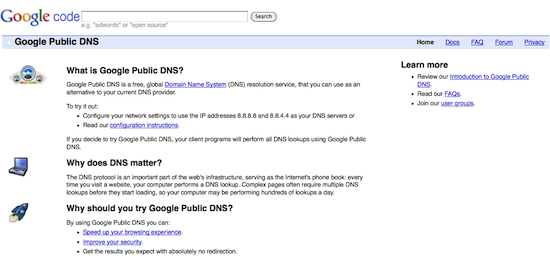I’ve been exploring less expensive Android gadgetry lately in my search for a capable but not overly glitzy e-book reader. My experience with Velocity Micro’s Cruz Reader, which I have previously documented, was not a positive one. I’ve now turned my attention to a Rockchip-powered Android tablet from Yixin, a Chinese electronics and toy manufacturer. I’m hoping to have one in my possession shortly.
The gadget gift giving season is upon us. And no doubt in the coming weeks many Android tablets will be wrapped up and adorned with ribbons and bows. But are there other creative ideas out there, possibly free, that could put a smile on a young child’s face?
I don’t normally turn to Voxeo in these matters, but I came across a neat suggestion in their blog for turning their Tropo multi-media development environment into a joy machine.Continue reading





 On Friday, the FCC sent out a letter to Fox and Cablevision requesting both to state how they are meeting their statutory obligations ( “to negotiate in good faith”) over their current retransmission dispute. As Yankee fans are painfully aware, Cablevision and Fox had an agreement that expired on October 15 to carry WNYW, WWOR, and WTXF channels. Cablevision pulled its rebroadcasting of local MY 9 and Fox 5 television, which carries the Yankee games in the New York area, in a disagreement over its payments to Fox.
On Friday, the FCC sent out a letter to Fox and Cablevision requesting both to state how they are meeting their statutory obligations ( “to negotiate in good faith”) over their current retransmission dispute. As Yankee fans are painfully aware, Cablevision and Fox had an agreement that expired on October 15 to carry WNYW, WWOR, and WTXF channels. Cablevision pulled its rebroadcasting of local MY 9 and Fox 5 television, which carries the Yankee games in the New York area, in a disagreement over its payments to Fox. Holy Heisenberg! Scientific American, the magazine better known for writing about dark holes and gene splicing, has editorialized earlier this month on the state of US broadband. While SA has in recent years taken on more topical subject matter, there opinionating on broadband was a bit of a surprise to this long-time reader.
Holy Heisenberg! Scientific American, the magazine better known for writing about dark holes and gene splicing, has editorialized earlier this month on the state of US broadband. While SA has in recent years taken on more topical subject matter, there opinionating on broadband was a bit of a surprise to this long-time reader. I practically did a spit take while drinking my coffee this morning and reading The New York Times story about a municipal broadband project in Tennessee. I learned that Chattanooga’s community owned power provider, EPB, has plans to offer up to 1 Gigabit per second to its fiber-to-the-home subscribers by the end of the year. True, that can cost you almost $350 per year (lower if you bundle in voice and video).
I practically did a spit take while drinking my coffee this morning and reading The New York Times story about a municipal broadband project in Tennessee. I learned that Chattanooga’s community owned power provider, EPB, has plans to offer up to 1 Gigabit per second to its fiber-to-the-home subscribers by the end of the year. True, that can cost you almost $350 per year (lower if you bundle in voice and video). Here I’ve been getting excited about new user interface niceties such as voice rec in Windows Phone 7 and Android, while completely missing the bigger picture. The National Science Foundation has announced it will be funding a NeuroPhone, “the first Brain-Mobile Interface (BMI).” This “high risk, exploratory research,” to be conducted at Dartmouth College, involves developing a consumer-level wireless EEG (electroencephalography) headset to interface with a mobile device. From what I can decipher from the proposal abstract, they will study ways to digitize and interpret brain wave activity.
Here I’ve been getting excited about new user interface niceties such as voice rec in Windows Phone 7 and Android, while completely missing the bigger picture. The National Science Foundation has announced it will be funding a NeuroPhone, “the first Brain-Mobile Interface (BMI).” This “high risk, exploratory research,” to be conducted at Dartmouth College, involves developing a consumer-level wireless EEG (electroencephalography) headset to interface with a mobile device. From what I can decipher from the proposal abstract, they will study ways to digitize and interpret brain wave activity. For Skype customers and just about anyone else who’s every typed phone numbers into a virtual dial pad, Gmail video and voice chat, even with its new ability to make free calls to cell and landlines, may warrant a big whoop. I had the dubious pleasure of retrieving voice mail through my email at some point in the late 1990s, so some of this telephony novelty has worn thin.
For Skype customers and just about anyone else who’s every typed phone numbers into a virtual dial pad, Gmail video and voice chat, even with its new ability to make free calls to cell and landlines, may warrant a big whoop. I had the dubious pleasure of retrieving voice mail through my email at some point in the late 1990s, so some of this telephony novelty has worn thin. Is this what Verizon CEO Ivan Seidenberg metaphorically whispered into the Google founder’s ear? I’m still reeling from the Google-Verizon non-aggression pact and what it will mean for a competitive and open Internet. Some have pointed out that the proposal is merely a regurgitation of the FCC’s six freedoms for an open Internet.
Is this what Verizon CEO Ivan Seidenberg metaphorically whispered into the Google founder’s ear? I’m still reeling from the Google-Verizon non-aggression pact and what it will mean for a competitive and open Internet. Some have pointed out that the proposal is merely a regurgitation of the FCC’s six freedoms for an open Internet.
